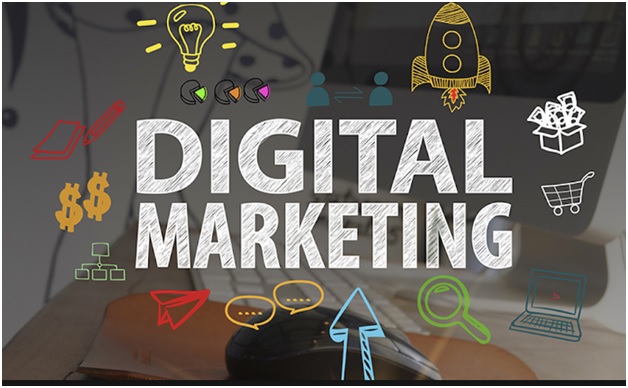Whether it is to design a new logo, a marketing campaign, an ebook or create a professional website , the key for the development of the project to flow well and be successful from the beginning is to start with a creative briefing .
Ah, you don’t know what a creative briefing is?
Well, pay attention because in this post you will discover how to take advantage of this tool, both for your own business and to work on client assignments.
In addition, I am going to tell you how to create one and what essential elements cannot be missing in a creative flag briefing.
First Things First: What Is A Creative Briefing And What Is It For?
A creative briefing (also called a “brief”) is a document that explains and collects the most relevant aspects of a project . It is… like the fingerprint, which not only helps the professionals who are going to participate in the development, but also exposes the strategy and objectives (among other things, as you will now see).
It is a useful tool whether you collaborate or work with agencies or if you are going to hire a web designer or some other professional to start up a new project for your business.
So don’t think that a creative briefing is only useful in large marketing companies or for designers, but it will also make your job easier if you are a copywriter, social media professional or any other field of digital marketing .
How useful is it?
Definitely. In fact, I cannot conceive of starting an assignment without first preparing a briefing , which I draw up with the help of my clients and which I can then share with my team.
Because that is another of the great advantages of working with a creative briefing: as all the important aspects of the project are summarized in a single document, any professional involved in development will be able to have the necessary information at a glance .
That, believe me, makes work much easier, makes it more efficient, avoids misunderstandings and improves teamwork and productivity .
And In What Format Is A Creative Briefing Created?
For tastes, the colors; and in the case of a briefing, it is no less.
You can write it in a simple Word, in a PowerPoint presentation, PDF, a Google document or a Google presentation. You choose.
What I do recommend is that you always use the same format . Why? Simply because this way you will be able to prepare a template to customize for each order and you will save a lot of time .
With that said, let’s get to the meat of the matter…
What Are The Essential Elements Of A Creative Briefing And How Is It Created?
There are certain aspects that cannot be missing, so I am going to tell you what points you must include yes or yes.
1. Description Of The Business
The first point you will need to gather information about is your customer.
For this reason, it is convenient to start by collecting a brief context about the business, what it does, what its trajectory has been to date… In short, those aspects that help you understand the theme and the nature of the client with whom you are going to work .
You can include links to sites, products and services if you consider it necessary.
2. Project Summary
What does the assignment consist of? Why does the customer need it?
It is not the same to have a campaign for social networks in hand than to do a web redesign , to be about to launch a new service or to sell a specific info product.
Before you get to work, you need to know what we are talking about to put yourself in a situation , don’t you think? 😉
3. Explain The Goals And Strategy
This is one of the most important points of a creative briefing. It is essential to know the purpose of the commission before starting with the development .
For this reason, it is essential to include a point in which the objectives of the project are perfectly exposed .
Get more customers?
Do a loyalty campaign?
Carry out a brand repositioning?
Whatever it is, put it in writing.
And don’t forget the strategy. Think that a good creative briefing behaves like a kind of treasure map, so you not only have to define the treasure, but also know how to get there. 😉
4. Define The Audience
It is just as important to know the why as the to whom.
It is not the same to address someone who is 16 years old than someone who is 40 or 65.
You already know me and you know that I usually emphasize the need to always define the ideal client . And in the case of a creative briefing, the same thing happens.
Whether you are going to use this document for yourself or for your clients, you need to know the audience or target as much as possible : the demographic and socioeconomic situation, the usual behaviors and their problems or needs are elements that you cannot miss in a good creative briefing. .
5. Detail The Deliverables
Does your client need a website? A sales page? Perhaps an advertising banner design? Physical brochures? Posters? A video?
The final destination will determine the support and what you will deliver to the client when finished.
Be sure to include the formats, sizes and other details so there is no doubt.
6. Identify The Competition
This point has little mystery.
Researching your client’s competitors (or yours if the briefing is for you) helps you to better understand the context of the sector and what is working for the competition.
Hey, don’t get me wrong. I am not encouraging you to copy anyone (never!), but to look at the “internal mechanisms” of the sector and the subject matter of the project.
7. Define The Tone, Message And Style
The tone and style of a project should be consistent with and consistent with the brand image of the business.
8. Set A Deadline
If there is an agreed delivery date with the client (something you should ALWAYS do, of course), include it in the creative brief.
It will help you to keep it in mind and avoid delays, but it will also be useful for collaborators or professionals who are going to participate.
The objective: that all the people involved in a project know the established deadlines , both at the beginning and at the end and the intermediate phases (if any).
9. Specify The Budget
Detailing the budget is useful because it can condition the development of the assignment.
It is not enough to have good ideas and know how to translate them. It is also necessary to be able to carry them out. And for that, knowing money is essential.
10. Detail The Non-Negotiable Issues
They are called “mandatories”; that is, elements that must be included and are non-negotiable .
For example, logos, images, means of contact, legal texts …
3 Tips For A Good Creative Briefing
If you’ve come this far and are about to open a blank page to create your first creative brief, wait.
I want to make 3 recommendations so that you do not spend time creating your document and then it is useless .
Briefing Means “Brief”
And if I highlight it is for something.
A briefing without information is as bad as one with too much of it.
Include what you need, but please, only what is essential . Remember that it is supposed to be a document that should be able to be consulted in 5 minutes.
Be Clear
That is, keep the technicalities in a drawer . Avoid weird words, acronyms and any word that may arouse doubt in anyone outside your profession.
Keep in mind that this document will not only be seen by you, but many times it will also be in the hands of other collaborators, and I imagine that you do not want to waste time explaining what you mean by each term nor, of course, that someone can interpret what it’s not.
Accuracy Is A Value
You don’t need to pour everything you have in your head into your briefing.
Be specific and concise. It’s hard? It can be; but if you pay attention to me, in the long run you will see that it greatly facilitates and clarifies the work.
Are You Going To Create Your First Creative Briefing?
As I said at the beginning, the briefing is useful both for creative professionals who work with clients and for entrepreneurs who are going to develop their projects by themselves.
So, ready to try this tool? Have you ever worked with a creative briefing? Do you often use it with your clients and do you find it as useful as it did for me? I hear you in the comments. I see you there, killo !









